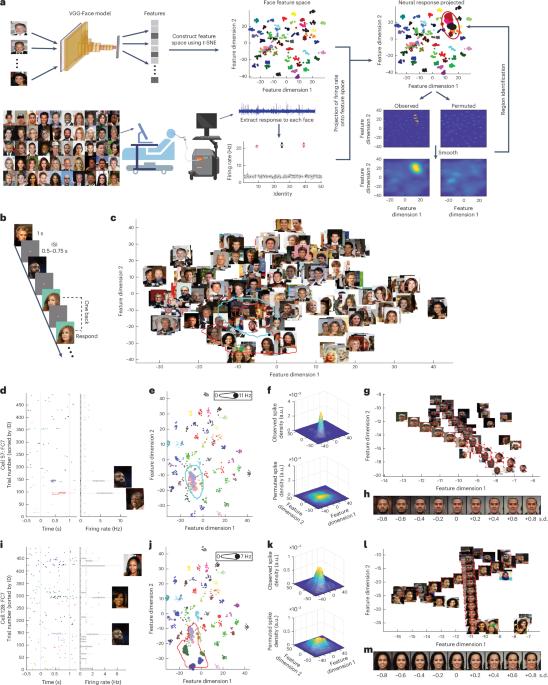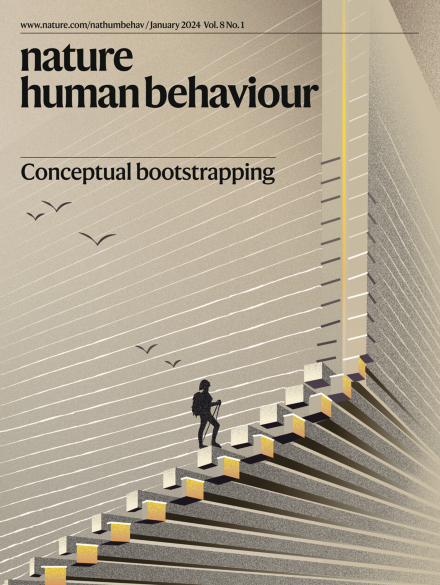人类杏仁核和海马体单个神经元基于特征的人脸识别编码
IF 15.9
1区 心理学
Q1 MULTIDISCIPLINARY SCIENCES
引用次数: 0
摘要
人类杏仁核和海马体中的神经元通常被认为编码一个人的身份,而不受视觉特征的影响。然而,来自高级视觉皮层区域的视觉信息是如何转化为个体的语义表征的,这在很大程度上仍然是未知的。在这里,通过四个实验(来自19名神经外科患者的3,581个神经元,超过111个会话),我们展示了基于区域的人脸特征代码,其中神经元基于共享的视觉特征而不是已知概念的关联来编码人脸,这与主流观点相反。特征神经元对一组面孔进行编码,而不考虑它们的身份、广泛的语义类别或熟悉程度;编码区(即接受区)预测特征神经元对新的面部刺激的反应。总之,我们的研究结果揭示了一类新的神经元,它们将感知驱动的面部特征表征与助记语义表征连接起来,这可能构成陈述性记忆的基础。本文章由计算机程序翻译,如有差异,请以英文原文为准。


Feature-based encoding of face identity by single neurons in the human amygdala and hippocampus
Neurons in the human amygdala and hippocampus are classically thought to encode a person’s identity invariant to visual features. However, it remains largely unknown how visual information from higher visual cortical areas is translated into such a semantic representation of an individual person. Here, across four experiments (3,581 neurons from 19 neurosurgical patients over 111 sessions), we demonstrate a region-based feature code for faces, where neurons encode faces on the basis of shared visual features rather than associations of known concepts, contrary to prevailing views. Feature neurons encode groups of faces regardless of their identity, broad semantic categories or familiarity; and the coding regions (that is, receptive fields) predict feature neurons’ response to new face stimuli. Together, our results reveal a new class of neurons that bridge perception-driven representation of facial features with mnemonic semantic representations, which may form the basis for declarative memory. Cao et al. show that human amygdala and hippocampus neurons encode visual facial features, bridging perception-driven representations with mnemonic semantic representations.
求助全文
通过发布文献求助,成功后即可免费获取论文全文。
去求助
来源期刊

Nature Human Behaviour
Psychology-Social Psychology
CiteScore
36.80
自引率
1.00%
发文量
227
期刊介绍:
Nature Human Behaviour is a journal that focuses on publishing research of outstanding significance into any aspect of human behavior.The research can cover various areas such as psychological, biological, and social bases of human behavior.It also includes the study of origins, development, and disorders related to human behavior.The primary aim of the journal is to increase the visibility of research in the field and enhance its societal reach and impact.
 求助内容:
求助内容: 应助结果提醒方式:
应助结果提醒方式:


